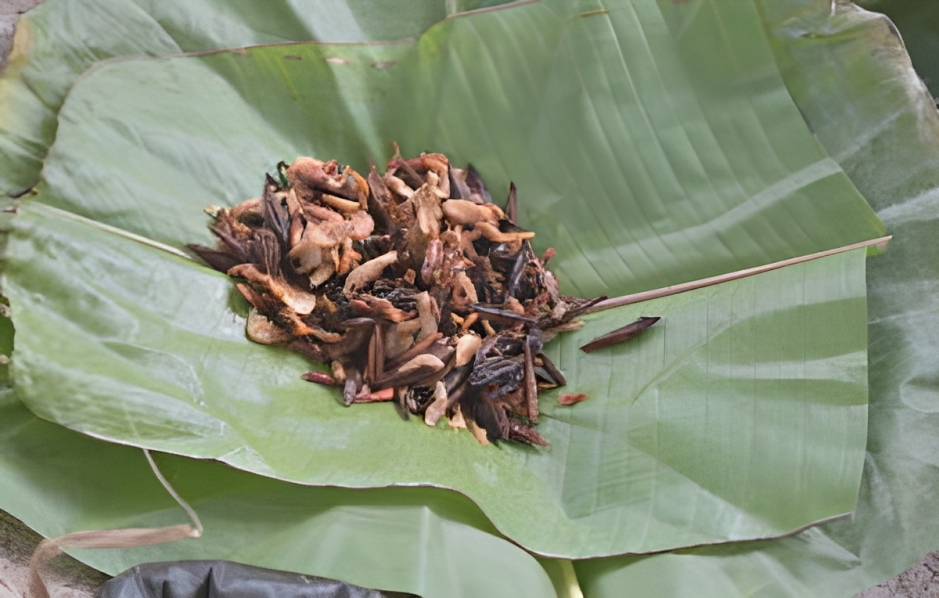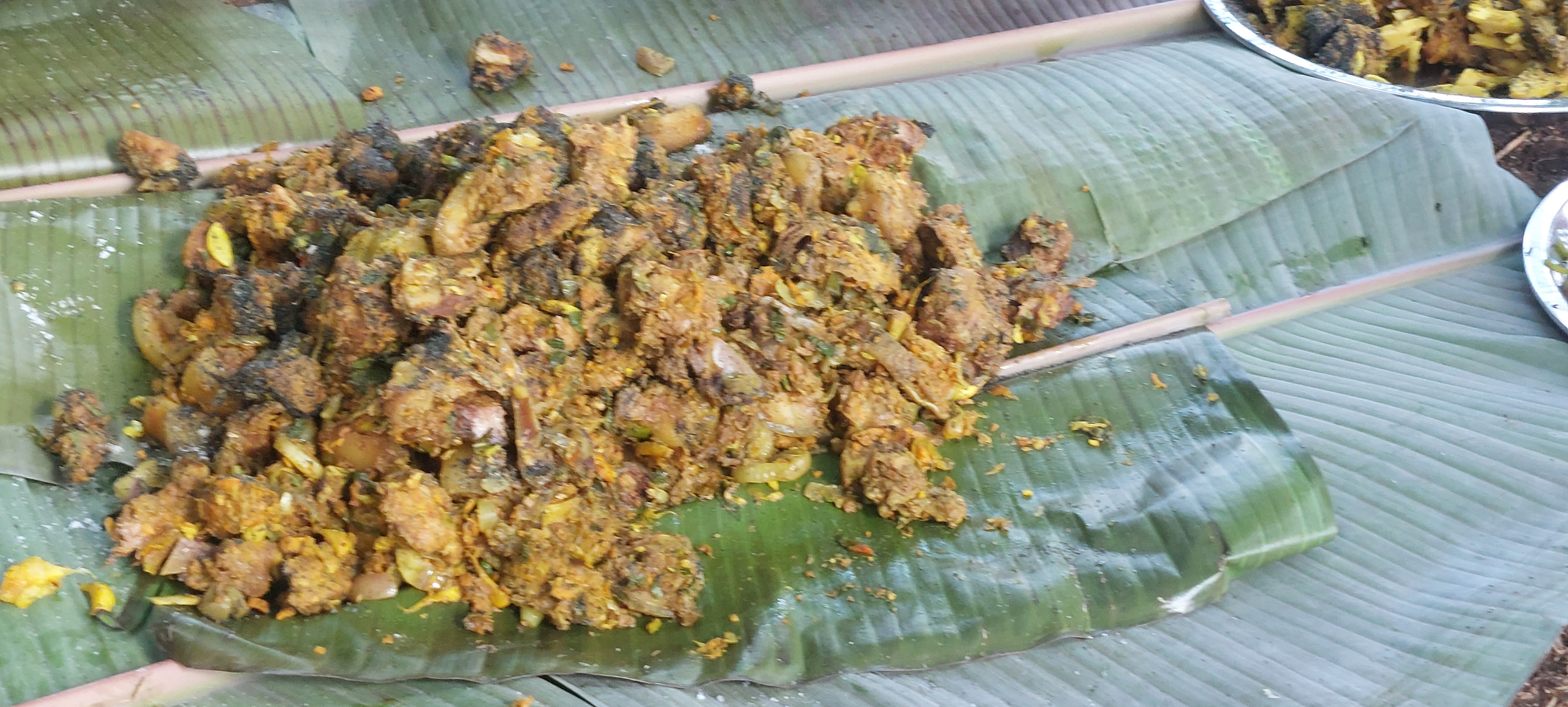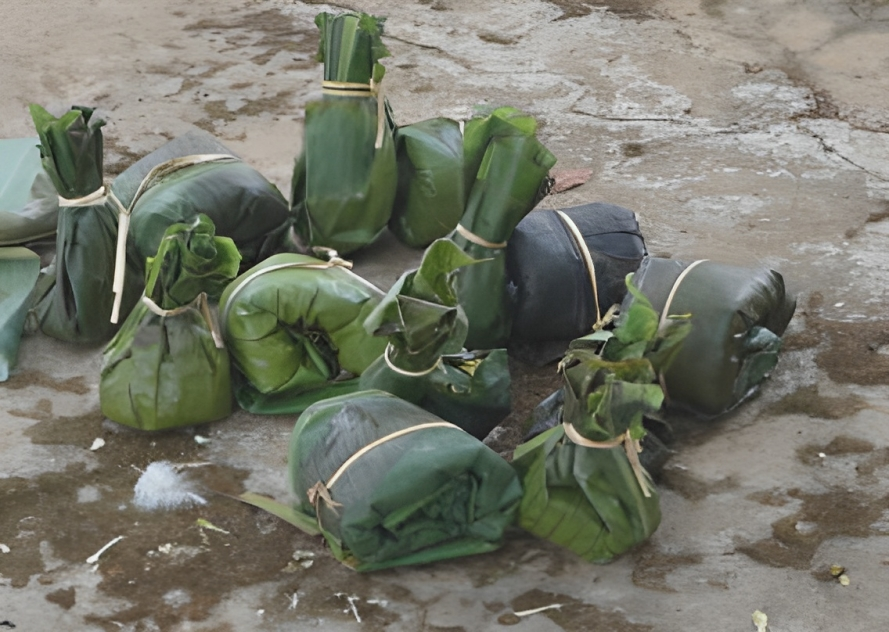Delicacies

KEMUNG
KEMUNG👋
KEMUNG 👋
Kemung is a process of cooking in which an eatable is prepared by stuffing meat in a raw bamboo langpong (bamboo cylinder with one end closed) and heating it up over fire, all without the use of water. The water present in the bamboo itself increases the temperature in the langpong, The mouth of the langpong is tightly covered with raw leaves (preferably turmeric leaves), creating a vacumm in the langpong which acts as a pressure cooker. A person with high respect in society is always presented with an ok langpong (meat cylinder) in any social gathering.








